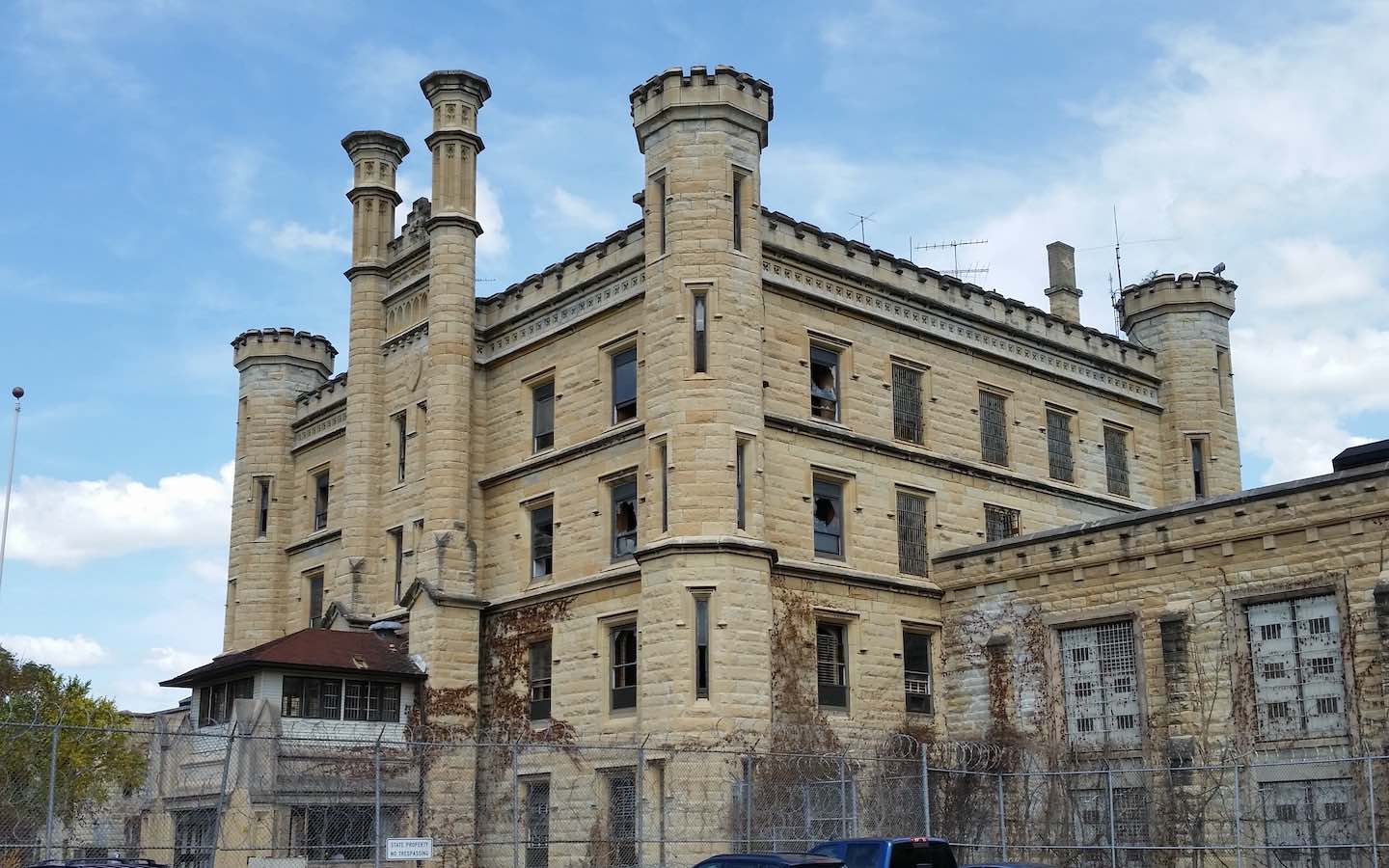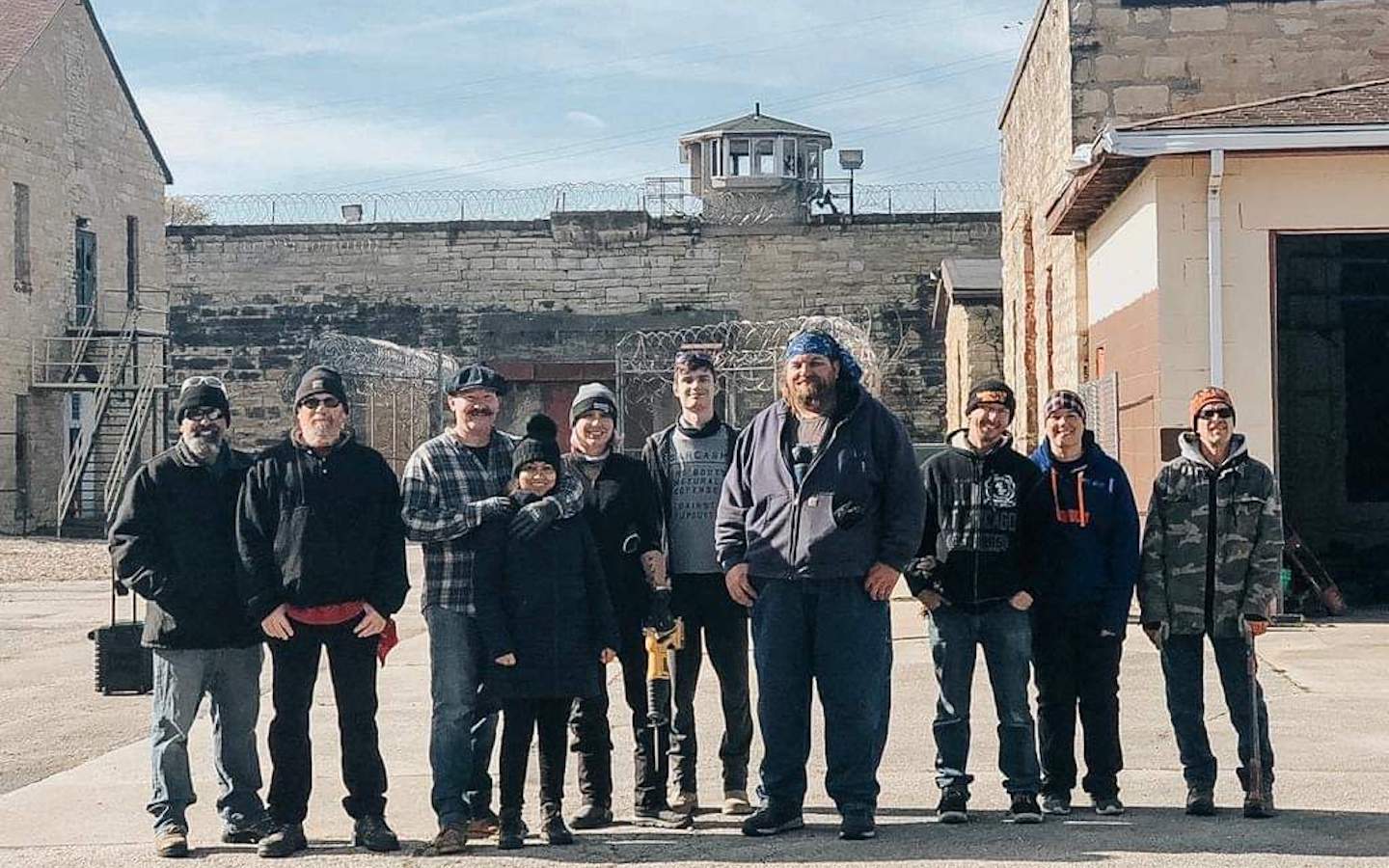
The Old Joliet Prison, made famous by cameos in Blues Brothers and Prison Break, is a limestone monolith that sits at the start of Route 66 in Illinois. For almost 150 years, the penitentiary held thousands of prisoners with reports of appalling conditions. Then, in 2002, the building was abandoned.
On one excursion in June 2018, Michael Kucynda (BSBA ’17) and his family decided to stop by for a look at the imposing Gothic architecture. He ran into a man named Greg Peerbolte, the executive director of the Joliet Area Historical Museum, who offered to take the family on a tour.
Two years later, Michael volunteers every month with the Saturday Squad, a group of volunteers dedicated to renovating the striking building and preserving its fraught history for others to learn from.
Michael answered a few questions about his Roosevelt experience and his volunteer work.
WHAT IS ONE OF YOUR FAVORITE ROOSEVELT MEMORIES?
When I started school, I was a working adult, so I attended in the evenings and was able to relate to a lot of these environments, and bring some of my experiences to the classroom for other students that have not fully experienced the working world as I have.
My peers from the bachelor’s in human resources program, who are too many to name and they know who they are. My advisor, Jennifer Wonderly, has been a tremendous help from day 1. My instructors at the time created environments that challenged every aspect of a way to think.
I got involved with the Professional Mentoring Program as a way to give back to my Roosevelt family. I feel that it’s my obligation to help the future generations behind me to become the best they can be.
HOW HAS ROOSEVELT HELPED YOUR RESPOND TO THE UNPREDICTABLE CHALLENGES OF THIS YEAR?
By far the most with my connections. I keep in touch with many of my peers and some instructors, not only for career leads but also just to throw ideas out and see what their take is. Many have been very supportive and others will be the ground to keep me balanced. The skills that I have learned that seem to be the most vital during this time is communication.
Listen to understand the full picture and learn how to network. Find ways into conversations even if you have no knowledge on the subject — just ask and come clean that you are new to this subject.
WHY IS IT IMPORTANT TO RESTORE THIS SITE?
The Old Joliet Prison is an eyeglass that looks into the past of Illinois Department of Corrections and how it’s transformed into what it is today.
This is the only fully intact prison in the Midwest where you can see an entire working prison. We have the opportunity to preserve an entire prison for future generations to learn from our dark past and how inmates lived and were treated, and admire architecture that we will never see again.
The iconic Gothic architecture of the new prison was designed by Chicago’s W.W. Boyington, who also designed the Water Tower on Michigan Avenue. The next time you walk past it, you can see some of the similarities between both buildings.
WHAT’S SPECIAL ABOUT THE HISTORY OF THE OLD JOLIET PRISON?
When you look deeper into the history of the prison, it carries a lot of significance to the state of Illinois as well as the Chicagoland area.
Before the prison opened its doors in 1858, Alton Prison was Illinois’ only state prison. During its time, Alton had conditions that were considered horrendous and not suitable for inmates. So the state legislation determined a new prison would need to be built to create better conditions for inmates. The inmates assigned to stay in the Old Joliet Prison also had to be the labor to build where they will be imprisoned.
During its time of operations, the Old Joliet Prison has seen some famous inmates. Leopold and Loeb, Richard Speck, John Wayne Gacy, James Earl Ray and Baby Face Nelson all spent time in the prison.
WHAT OBSTACLES HAVE YOU AND THE “SATURDAY SQUAD” OVERCOME IN YOUR WORK?
One of the biggest physical obstacles that we overcame was the removal of the razor wire. It was also probably the most intricate, paying attention to every move and how you handle it without getting bit by the razor wire. Some of our other projects consisted of clearing debris in the buildings, removing brush and trees on the outside and inside perimeter and clearing out the front box to make way for the Joliet museum to open its welcome center.
Our next big obstacle will be to maintain the grounds and clean the cell houses in hopes that one day they can be open for tourists to walk through.
The “Saturday Squad” is always looking for more volunteers of all skill sets, especially specialized construction backgrounds: building and structure stabilization, electrical, solar panels and roofing. To be a part of this undertaking, please reach out to Michael Kucynda or Greg Peerbolte, Executive Director of the Joliet Area Historical Museum, at (815) 723-5201 x 7210.
I keep in touch with many of my peers and some instructors, not only for career leads but also just to throw ideas out and see what their take is. Many have been very supportive and others will be the ground to keep me balanced.
- Michael Kucynda, BSBA '17
